
 by Kit Walker
by Kit Walker
Contributor, ZenGardner.com
Through the Looking Glass
Why is music so magic? Why is it that almost everyone likes music in one form or another? Is there something intrinsic to music itself that goes beyond any style, genre, or quality level that makes it so intriguing to us? Somehow it transports us to another place. It is as if it takes us through the looking glass.
The Magical Mirror of Music
The world we live in is backwards. War is peace, wrong is right, life is death. More than ever, it seems, the hideous is glorified, and the beautiful is trampled in the mud. It is as if we are living as a reflection in a mirror, where everything is backwards. Perhaps this is more true than we might imagine.
Nowadays, most everything we’d like to see happen seems more and more impossible. Like peace, prosperity, health, love, harmony, thriving, sharing, caring.
Perhaps music, of all things, can be most effective in helping us correct the situation. Perhaps there is a charm in the impossibility of everything, a magic solution.
Zero Point is the Mirror
Think of zero, the portal between worlds, the balance point between positive numbers and negative numbers. And what are “negative” numbers? How can something be less than zero? Perhaps the “negative” numbers represent potential, and “positive” numbers represent actual.
Zero is the looking glass. When you become the zero, you become the looking glass. You become the portal between the world of the unmanifest and the manifest. You become the way for infinite potential to activate.
And this sequence of numbers, from minus numbers, through zero, to plus numbers, you could call the Ultimate Palindrome. (more about palindromes in a moment.)
Music can bring you to the mirror state. When you are looking in the mirror, you are just the reflection, no substance. But when you become the mirror, the world becomes the reflection. As John Lennon said, “the more real i become, the less real the world appears.”
When you become the zero, you become the infinite, the true substance of existence.
You are the lightning that jumps between the poles of the potential and the actual.
Perhaps this can be a clue as to what happens when we hear music, and even more when we play it.
Mirror Universe
Now take a look at this. Scientists are discovering that perhaps indeed there is a mirror universe to this one, where time moves backwards, “but from the perspective of that universe, it would look like our time was moving backwards, not forwards, the researchers suggest.”
So apparently, to someone in that universe, it seems to them that, for them, time is moving forward.
“You start at that central Janus point where the motion is chaotic – that’s like the Greek notion of primordial chaos – but then in both directions you get this structure forming. If the theory is right, then there’s another universe on the other side of the Big Bang in which the direction of experience of time is opposite to ours.”
http://www.sciencealert2014.com/scientists-propose-a-mirror-universe-where-time-moves-backwards
Janus, in ancient Roman myth, was the god of beginnings, gates, transitions, time, doorways, passages, and endings. He is usually depicted as having two faces, since he looks to the future and to the past.

So it appears, at least according to this, that the entire universe is palindromic, and the Big Bang, the chaotic “Janus Point”, is the zero point mirror portal between them.
Music Under the Microscope
So let’s put music under the microscope, by going back to its most basic elements. Before music begins, we have a tone. A single tone on its own can produce amazing mandalas, as we see in this video of what is being called cymatics:
https://www.youtube.com/watch?v=GtiSCBXbHAg
Notice, even in the case of one tone sounding, the mandalas produced are all mirror images, where the left and right sides are reflections of each other, as are all mandalas.
And, if we slow a tone down far enough, it passes out of the spectrum of tone, into the spectrum of rhythm, and becomes a steady rhythmic pulse.
But what happens after that? Well, just like cell division, the next logical step in music is to add another tone. Life begins.
To me, music begins once there is more than one tone sounding. We call these intervals (with two tones), and chords (with three or more tones). So it seems appropriate to explore under the microscope, as well, what happens when we put two or three tones together. By slowing things down we can start to hear much more closely exactly what happens, and maybe we can find the secret of music’s fascination for us. And once we see what happens with two tones, we can extrapolate with our imagination, the magical world that opens up as many tones sound together.
But first, a little background:
the Schillinger System and Olivier Messaien
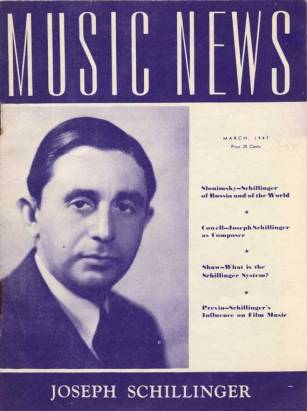
Many years ago, when i was studying music composition, i came across the Schillinger System of Music Composition, a weighty tome in two volumes written by Joseph Schillinger. Schillinger was a Russian composer, music theorist, and composition teacher, who later in his life moved to New York.
“In New York, Schillinger flourished, becoming famous as the advisor to many of America’s leading popular musicians and concert music composers including George Gershwin, Earle Brown, Burt Bacharach, Benny Goodman, Glenn Miller, Oscar Levant, Tommy Dorsey and Henry Cowell.”
https://en.wikipedia.org/wiki/Joseph_Schillinger
Schillinger’s system became one of the cornerstones of the musical method originally taught at Berklee School of Music in Boston, but has since faded more into the background in their curriculum. Written in the 1930s, long before computers, the book reads like a calculus text or something. It is easy to see how it could be daunting to many music students.
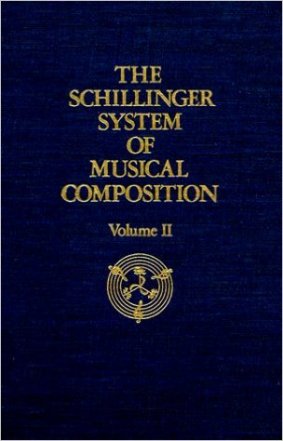
Full of mathematical formulas applied to music, it immediately fascinated me. It explores the mathematics of natural patterns, such as the Fibonacci series, in music.
“By revealing principles of the organization of sound through scientific analysis, Schillinger hoped to free the composer from the shackles of tradition. Although the system is forward-looking, couched in an apparently modern form, it also clarifies traditional music theory by debunking misconceptions from the past. He was clear that his methods allowed any style of composition to be undertaken more effectively.”
https://en.wikipedia.org/wiki/Schillinger_System
I found it interesting, too, that even though the book was written long before computers, in the 1930s, Schillinger wrote things like: “in the future, upon the elimination of the living performer…” like he was already seeing what was to come. Nowadays computers are capable of playing music that a human could not possibly do. The whole first part of the book is devoted to rhythm, and it was there that i found the first clues to the secret of music’s power to take us through the looking glass.
The Charm of Impossibilities

The other book which had a profound impact on me was the book written by the modern French composer, Olivier Messaien, called “the Technique of my Musical Language”. In that book, he introduces the phrase “The Charm of Impossibilities”, which refers to two things specifically: First is what he calls “modes of limited transposition”, and second, non-retrogradable rhythms. It is the non-retrogradable rhythms that are what i want to address here.
What is a non-retrogradable rhythm? It is a palindrome, a rhythm which, when played in reverse, is exactly the same.
Messaien’s music has a charm to it, It opens the door to another world. It is a beautiful example of modern “sacred” music. Of it he says: “ a true music, that is to say, spiritual, a music which may be an act of faith; a music which may touch upon all subjects without ceasing to touch upon God; an original music, in short, whose language may open a few doors, bring down some yet distant stars…”
a good example of this magic in Messaien’s music can be heard here:
https://www.youtube.com/watch?v=Ttiar5dGp_g
from Messaien’s Wikipedia page:
“From his earliest works, Messiaen used non-retrogradable (palindromic) rhythms. He sometimes combined rhythms with harmonic sequences in such a way that if the process were allowed to proceed indefinitely the music would eventually run through all the possible permutations and return to its starting point. For Messiaen, this represented the “charm of impossibilities” of these processes. “
https://en.wikipedia.org/wiki/Olivier_Messiaen
and from Messaien himself:
“One point will attract our attention at the outset: the charm of impossibilities. It is a glistening music we seek, giving to the aural sense voluptuously refined pleasures……this charm, at once voluptuous and contemplative, resides particularly in certain mathematical impossibilities of the modal and rhythmic domains. Modes which cannot be transposed beyond a certain number of transpositions, because one always falls again into the same notes; rhythms which cannot be used in retrograde, because in such a case one finds the same order of values again – these are two striking impossibilities. “
Olivier Messaien, from The Technique of My Musical Language.
As i studied the Schillinger System’s chapters on rhythm i noticed an interesting correlation with Messaien’s teaching, and that was that Schillinger’s whole theory of rhythm of was based on, you guessed it, palindromic non-retrogradable rhythms. Although he had a very different approach than Messaien, the two approaches are definitely complementary.
Polyrhythms Generate Palindromes
But here’s the fascinating part. Schillinger’s rhythm theory is based entirely on what happens when you superimpose different rhythmic groupings together, for example, 2 against 3, or 4 against 7 or 5 against 4. Really, any value against any other. He called it the “interference of multiple periodicities”.
What happens is, that when two different groupings of regular frequency, like groupings of 3, or 4 or 5 or 7, are superimposed, or played together simultaneously, a “resultant” rhythm appears, from the “interference” of those two frequency pulses. Although the pulses themselves are regular, when they interact, a new rhythm is created, which is usually not just a regular pulse, but rather a rhythm, which involves strikes and spaces, or notes and rests, in various patterns.
You could imagine the ripples from two stones thrown in the water crossing each other, in an “interference pattern”. Each stone creates a regular wave pattern, but when the two wave patterns intersect, the pattern becomes much more complex.
A familiar example, at least for most musicians, is the rhythm created by 2 against 3.
This example shows 4 against 3. The rhythm that results has a length of 12 8th note pulses (4×3=12), and is notated at the bottom. It is easy to see that if it were reversed, it would be the same rhythm.
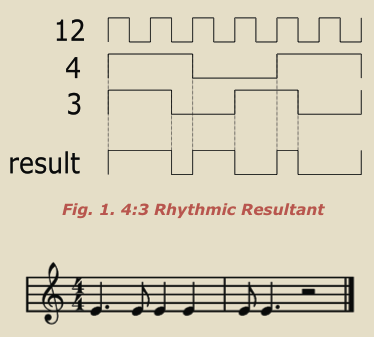
But the magical part of this, the real point, is that, no matter what gets played against what, whether it is 2 against 3 or 3 against 7, or 5 against 6, or 12 against 13, you name it, anything against anything, the resultant rhythm is ALWAYS a palindrome, a non-retrogradable rhythm, the same backwards as forwards.
So when this is seen in the light of Messaien’s vision of the charm inherent in palindromic rhythms, suddenly a whole new world opens up.
Universal Theory of Rhythm
And i have also noticed, while exploring Schillinger’s rhythm theory, in this context of any value against any other, that one finds every rhythm that has ever been played, or will ever be played. It is a kind of universal theory of rhythm that transcends any particular culture or region, yet contains them all. It opens a fractal world of infinite possibilities. In this world, there is no end to the creativity. You will never run out of ideas or inspiration.
And somehow it is connected to the very way that all of manifestation happens, in a kind of fractal patterning, constantly unfolding spontaneously, and interacting. Manifestation itself is actually a rhythmic process !
Intervals are Polyrhythms
Now, the final piece in this puzzle is that many of these polyrhythms, such as 2 against 3, or 4 against 5, and so forth, when sped up considerably, actually become MUSICAL INTERVALS. For example, 2 against 3 becomes a perfect fifth. 4 against 3 becomes a perfect fourth. 5 against 4 becomes a major third. 6 against 5 becomes a minor third. And then when you add a third periodic pulse of a different length to the rhythm, you will get a chord when they are sped up. For example, the rhythm of 6 against 5 against 4, (6/5/4) yields a major triad when sped up.
You can find very well illustrated audio examples of this at the blog of Dan Tepfer in this excellent article: “Rhythm / Pitch Duality: hear rhythm become pitch before your ears”
http://dantepfer.com/blog/?p=277
You can hear in his examples how a note, when slowed way down, just becomes a steady rhythmic pulse. As it is sped up again, it transitions back into the world of tone. And you can also hear in his examples how intervals, when slowed down, become rhythms, although he doesn’t mention anything about these rhythms being palindromes, which, to me, is the one of most noteworthy things about them.
Intervals are Windows to Infinity

So essentially what is happening when we are hearing intervals, (which is happening ALL THE TIME when we are hearing music, ) is that we are hearing palindromic rhythms constantly, but they are sped up so fast that our conscious mind just doesn’t notice.
Even when listening to palindromic rhythms at normal speed we don’t necessarily notice that they are palindromes, but that does not mean that they do not have an effect on us. Messaien’s contention is that they DO affect us, in a magical way.
So, perhaps this is the reason that people are fascinated by music, and also why it doesn’t seem to matter what kind of music. Nearly everyone likes some kind of music or other. Apparently, the fascination begins the moment two notes are played together, which is when music really begins. But even in one tone, the interaction of its overtones will also contain the palindromic mirror magic
Mirror Neurons
So, what does listening to a palindrome do to us? How does it affect our consciousness? Well, here we may have to get a little less “scientific”, because we don’t really know exactly what happens. There is something that goes on that is not really quantifiable, because it has a mystical or spiritual component. Music is associated with the mystical planet Neptune and the sign that it rules, Pisces. And the symbol for Pisces is the two fishes, connected together. But it opens us up to wonder about it.

Apparently the “mirror neurons” in our brain are activated by music, according to some scientists. Although they still don’t know much about these mirror neurons, and I had never even heard of them before, i found it oddly synchronistic to run across this information now, as i have been preparing to write this article. It seems that these mirror image rhythms could perhaps balance the two hemispheres of the brain, or even help dissolve the boundary between them, as well as the boundary between inner and outer.
“Musical entrainment creates connection both internally and externally which can be seen when watching a whole crowd dance to a live band, or the people around you sobbing at an opera. Science explains this as an aspect of mirror neurons, which are a form of mimicking that can happen emotionally and physically.”
http://upliftconnect.com/health-benefits-of-music/
https://en.wikipedia.org/wiki/Mirror_neuron
The Witness is the Infinite Mirror
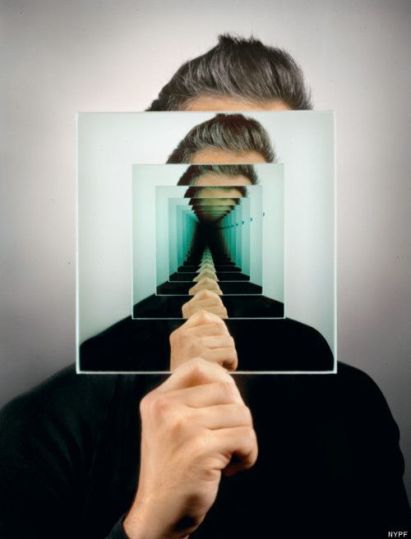
I love the image of the mirror, because when two mirrors reflect each other, infinity is invited in. And, also, the mirror is a metaphor always used to describe the process of the Witness, which is the final step in the spiritual process before dissolving in Oneness. On the other side of the mirror is a magical world.
The way I see it, the Witness is urgently needed right now. I think we have no idea how powerful the Witness is, as the “ultimate weapon” in the spiritual warfare that we are being forced to engage at this time.

The Witness is the Infinite Mirror, merely reflecting whatever passes without any value judgement whatsoever. Everything is revealed as it is, with nothing added or taken away. The point is, it is SEEN. And whatever is false, is revealed as false. Whatever is true is revealed as true. And ultimately, the only “thing” that is really real is that which cannot be destroyed, the radiant wisdom domain beyond all the comings and goings of time and space.
When you are a mirror, people see themselves in you. Situations are reflected in you. And because of that, they change spontaneously.
Yes, there are many who do not want to see their own reflection and will want to smash the mirror. But this mirror is indestructible. Unborn, and deathless.
the Solution is Dissolution
As one’s own ego limitation, or belief in separate self, is witnessed from the Witness “position”, the miracle happens: ego contraction, and all sense of separateness, dissolves. There is no need to “kill” the ego. When it is truly seen as it is, in its entirety, it simply disappears, as in waking up from a dream. And once this happens, then the process begins to spread to the world around one. That is why I feel that the more the Witness process of the collective is activated in each of us, the freer we will become from the ego tyranny being imposed on us now.
It is not, for someone in the state of the Witness, that action will not happen, either. But action will arise spontaneously. Or not. The particular situation will spontaneously generate what is required, without any “doer”. And this is the place to be when listening to or playing music: completely out of the way, allowing the music to arise and unfold spontaneously.
Fractal Rhythm Theory
Coming soon: an introductory video in which i demonstrate how the palindromic rhythms are generated, using music software.
In it i demonstrate for you how complex these rhythms can become, and how, even at their most complex, and spanning over many measures, long periods of time, these rhythms are ALWAYS palindromes.
As musicians we can just contemplate and play around with these rhythms. When you hear them, you can just let them be imprinted in the mind in the same way you would contemplate a tree moving in the breeze. By being in total receptivity we can absorb and activate these fractal mirror rhythmic patterns, because they are active anyway within us, in our very DNA. And since these rhythms are harmony as it exists below the spectrum of tone, exploring them will inform our harmonic sense as well.
We can experiment with them in compositions in various ways, and eventually they will start to transform our improvisations and compositions. We find an effortless way to improvise, with no danger of ever running out of ideas. It is like the way flowers bloom and plants grow, endless life, always transmuting and replenishing. True abundance. No need for competition.
Stay tuned for forthcoming articles exploring this topic further, including a course of practical exercises for musicians of all levels of ability, which i am calling Fractal Rhythm Theory, which is a way for any musician to free their music from cultural or stylistic limitations, and to help develop a natural and uncontrived original style.
By working with these rhythms while in a state of contemplation, as a contemplative practice, we can open to a whole new level of creativity and originality, and ways to approach music that we’ve never even imagined.
Deep Listening
When i was studying with Madame Margaret Chaloff in Boston in the 70s, (more about my experience with her here), one exercise that she had me do was as follows: I had to go through an entire process of playing one note on the piano, (or perhaps tone is a better word for it), in which i went from conceiving the tone and feeling its pulse, to striking the tone on the piano, with many bodily details of breath, hand, arm, and posture, and then listening to it until it completely disappeared. I was to do this 5 times on each finger of each hand. This process lasted about an hour.
I had scales to practice, and classical pieces as well, but i decided to always begin with this practice, for the first hour, to be able to really get inside the practice process. It brought me into a deep meditative state. But i remember how, after i was done, i would begin to play tones together, as intervals, and then chords, and the inner magic of the tones and their interactions together was revealed at a whole new level, because a silence had come over me, just listening to the single tones until they disappeared. And now with this information about their palindromic nature, i can see and hear even more clearly, what the real, actual magic is that is happening in those intervallic tonal interactions.
Libra: harmony and sacred geometry
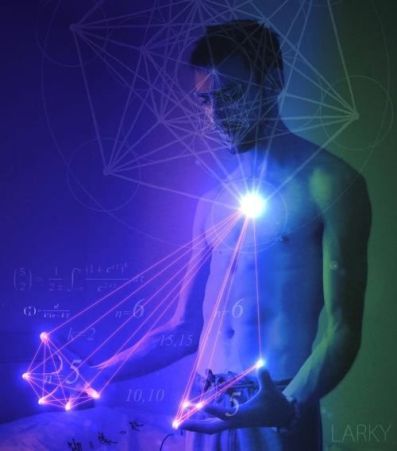
This is Libra, which rules relationships of all sorts, even those between two tones. Libra is also the sign of beauty and art, and sacred geometry. So each of these interval relationships between tones has a mirror embedded in it, and when we hear more tones added, the relationships become fractal, multi-faceted, crystalline, and “glistening”, as Messaien says. The mathematical interactions have a profound effect on our consciousness.
I feel they help connect us again to the world that is “through the looking glass”, the world where everything is as it truly is, not this backwards reflection. It is the world of beauty, harmony, beyond death, and eternal.
So as musicians, we can incorporate this level into our practice. Music is a mystical and sacred process. Let’s not forget this power of music. Let’s not just use music as a way to prop up our ego, and to distract us and others from what is real here.
The problem is, this magic power of music can be used against us as well, because it is hypnotic, entrancing. Just like any kind of magic, it can be used negatively. As we all know, someone who is hypnotized is highly suggestible. Music is like a pure carrier wave, that carries the energy of those who are using it to those who are hearing it. It is a language of frequency, neutral in itself, just like any language. But just as language can be used to curse or bless, so can music. Let’s not be naive about the forces behind much of the “music” we hear these days.
But with honest intent behind it, music is about as magic as it gets around here.
From listening to hearing
In many spiritual traditions a distinction is made between “listening” and “hearing”. At first the disciple listens to the master, to his verbal teaching. But at a certain point in his/her development, the disciple begins to “hear” the master, that is to truly understand that which is being passed to him/her, on another level. Listening is more of an active process with the attention still involved, but true hearing begins when duality is dissolved.
I suggest that we need to approach music in this way too. We can listen, and enjoy, as entertainment, but then when we open up to what is happening at a deeper level, we begin to “hear”. Really, with any sounds we can do this, although probably if we try listening to construction machinery, we will not want to stick around for the “hearing” part ! Really, i am thinking more of sounds in nature. But even machines make tones, and at times the city can sound like a strange composition indeed.
When we listen like a mirror, present, with the mind thoughtless and calm, like the surface of a windless lake, another layer begins to emerge that really can only be described as indescribable. If music is created in this spirit, it will facilitate us passing through the mirror to the world of the double.
the Doubling Theory
There is a fascinating, and relatively new (since 1988) teaching available now, taught by the French physicist/philosopher Jean-Pierre Garnier Malet, called the “Desdoblamiento del Tiempo” or the Doubling of Time. An important part of it is that we each have a double, who is really just our true self, who lives in another reality, our future reality, really, and that we can connect with our double, who is there to help us, to create the future, both for ourselves, and for everyone, that we really want to see.
According to Malet’s teaching, we connect with the double through imperceptible “time openings”, really just a infinitesimal fraction of a second, which on the other side can be a lifetime. These time openings are happening all the time, in an oscillation, a wave, much like AC, or alternating current, in electricity. We can return without even noticing we were gone, and yet have experienced hours, weeks, years, on the other side. There is where our double is waiting to connect with us.

Maybe this double is our best self, and maybe we can find music useful in this reconnection with him/her.
http://www.desdoblamiento.es/en/learn
As we look in the mirror, i’m sure it makes most of us wonder. And although we probably, at least as a child, wanted to pass through to the other side of the mirror, we grew up with the idea that it is impossible, which made it all the more intriguing. The charm of impossibility.
But do you know the real reason it is impossible? Because we are already there !
©2016 Kit Walker
find me on Facebook: https://www.facebook.com/pages/Kit-Walker/41181222326
The post The Charm of Impossibilities: Why Music is Magic appeared first on Zen Gardner.

